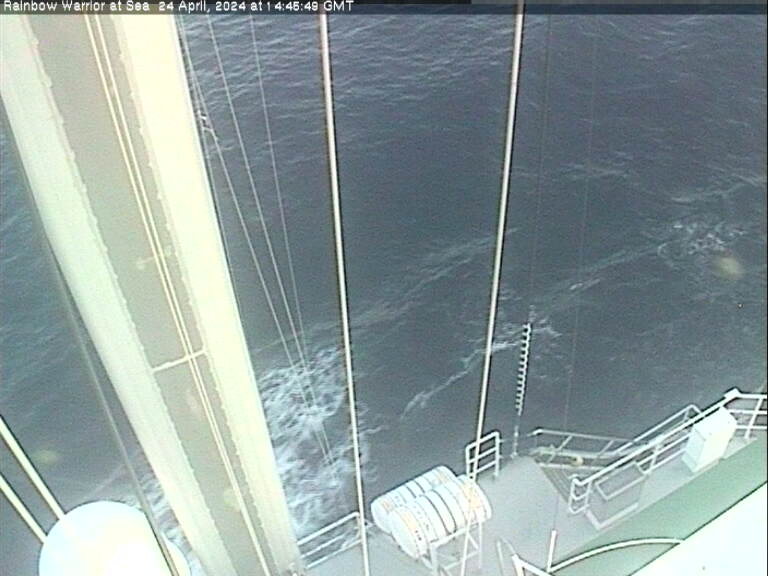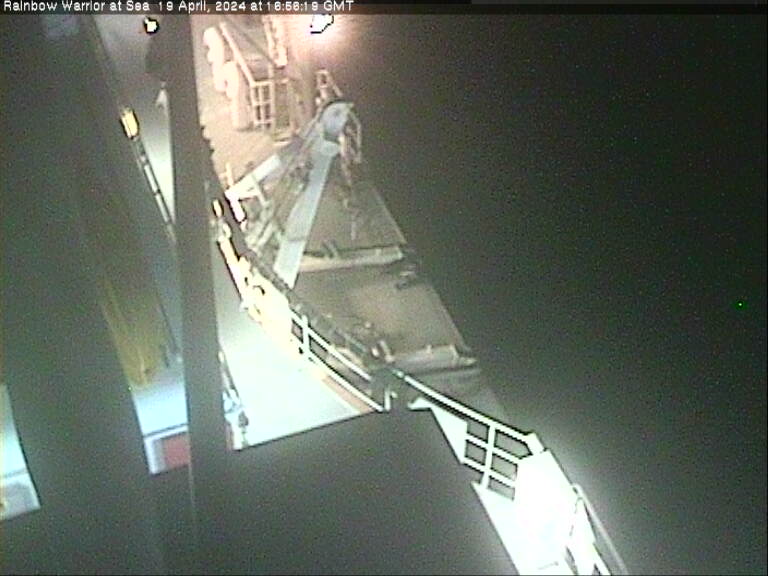The Rainbow Warrior
The Rainbow Warrior is an undisputed icon. Synonymous with breaking boundaries and fearless campaigning, Greenpeace has sailed with the name Rainbow Warrior since 1978. Our current sailing ship has been patrolling the world’s oceans since 2011.
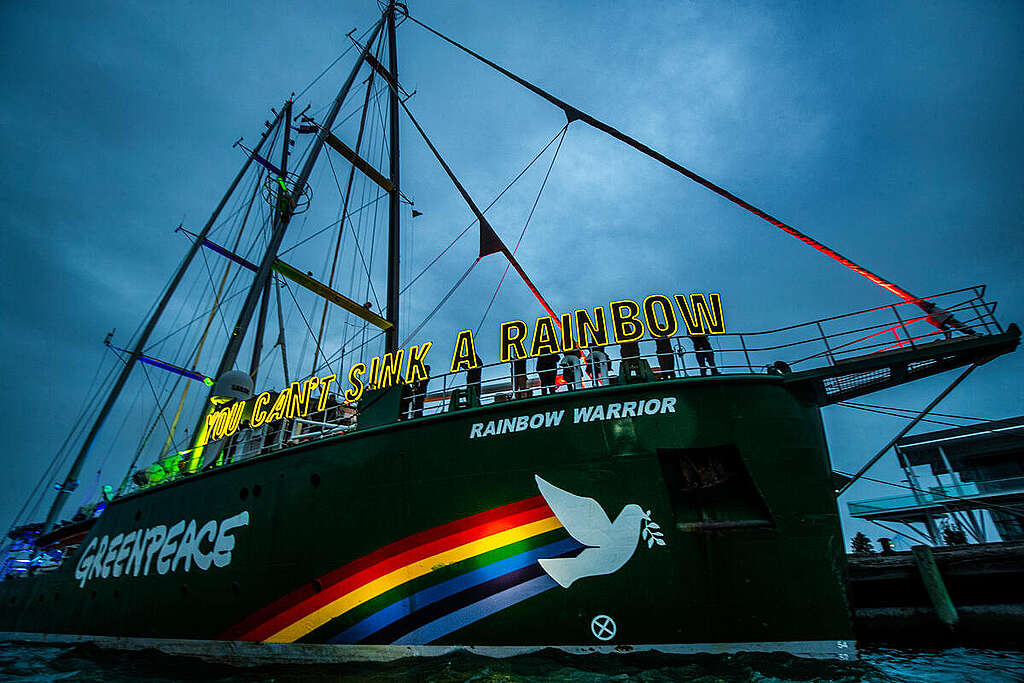
Watch: Dawn ceremony to commemorate the 40th Anniversary of the Rainbow Warrior bombing
We welcome you this morning in remembering Fernando Pereira, who was killed in the bombing of the Rainbow Warrior on 10 July 1985 by French Government agents.
We remember Fernando and many others who can’t be here with us today. People who have given their energy, their creativity, and their time to defend nature and peace.
And we celebrate the strength of our movement, which in 1985 showed that you can’t sink a rainbow, and continues forty years on with resilience and persistence to work towards a green and peaceful world.
Watch: The Boat and the Bomb
On the night of 10 July 1985, the blasts of two limpet mines placed by French secret agents sank a ship protesting against nuclear testing in the Pacific and took the life of onboard photographer Fernando Pereira.
This film captures the events leading up to the explosions, as well as the aftermath of what was deemed internationally to be a state-sponsored criminal act of sabotage. As details of the plot – implicating the highest level of the French government – were revealed, waves of outrage rippled across the globe. It fueled the debate about nuclear weapons testing which eventually culminated in the Comprehensive Test Ban Treaty in 1996.
-
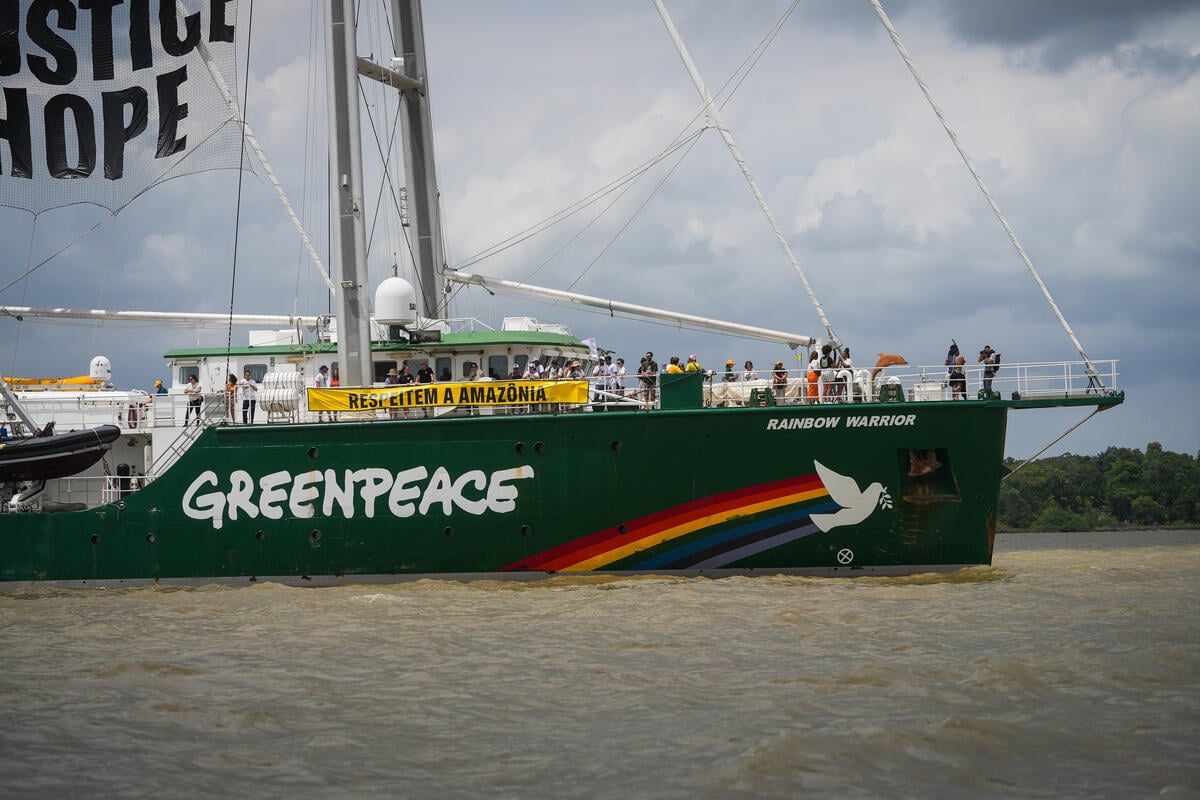
People’s Summit Flotilla with over 200 vessels demand climate justice at COP30
Greenpeace ship Rainbow Warrior, joins demonstration with Indigenous leaders and social movements and 5 thousand people from 60 countries.
-
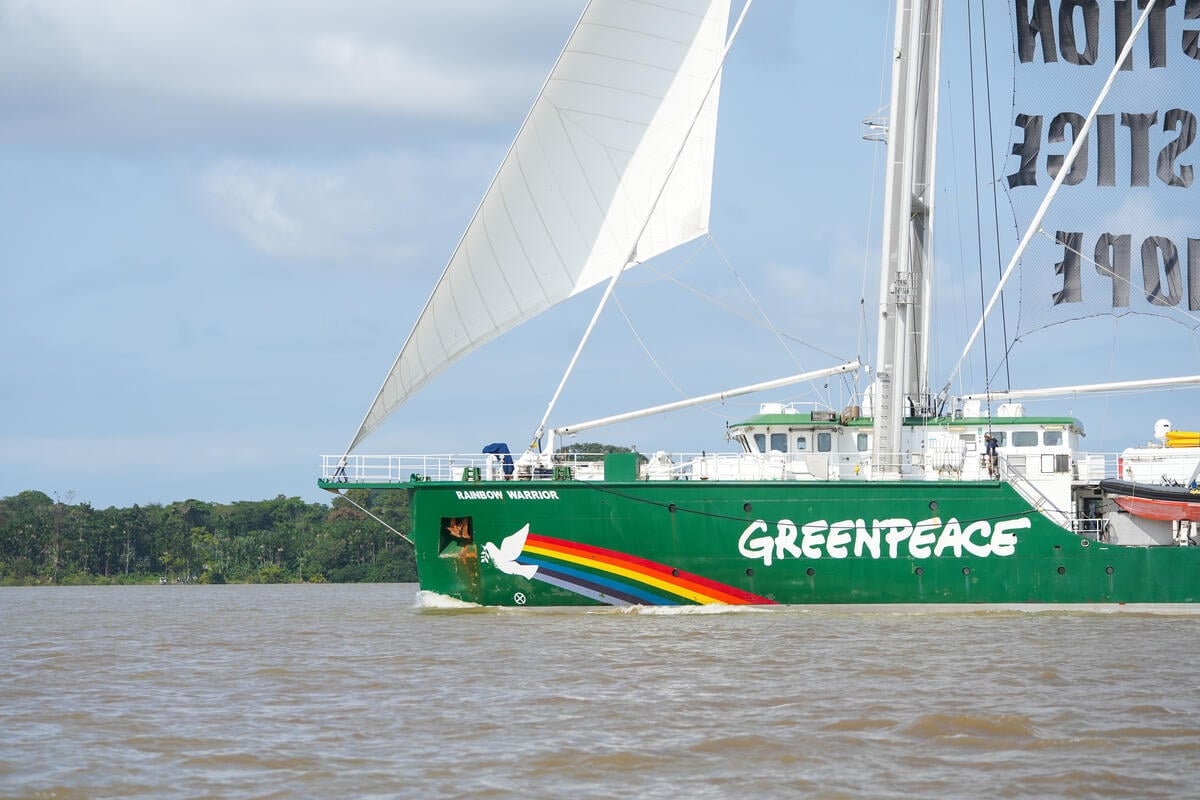
Greenpeace ship Rainbow Warrior arrives in Belém for COP30
Greenpeace’s iconic ship, the Rainbow Warrior, arrived in Belém, Pará, ahead of the United Nations Climate Conference COP30.
-
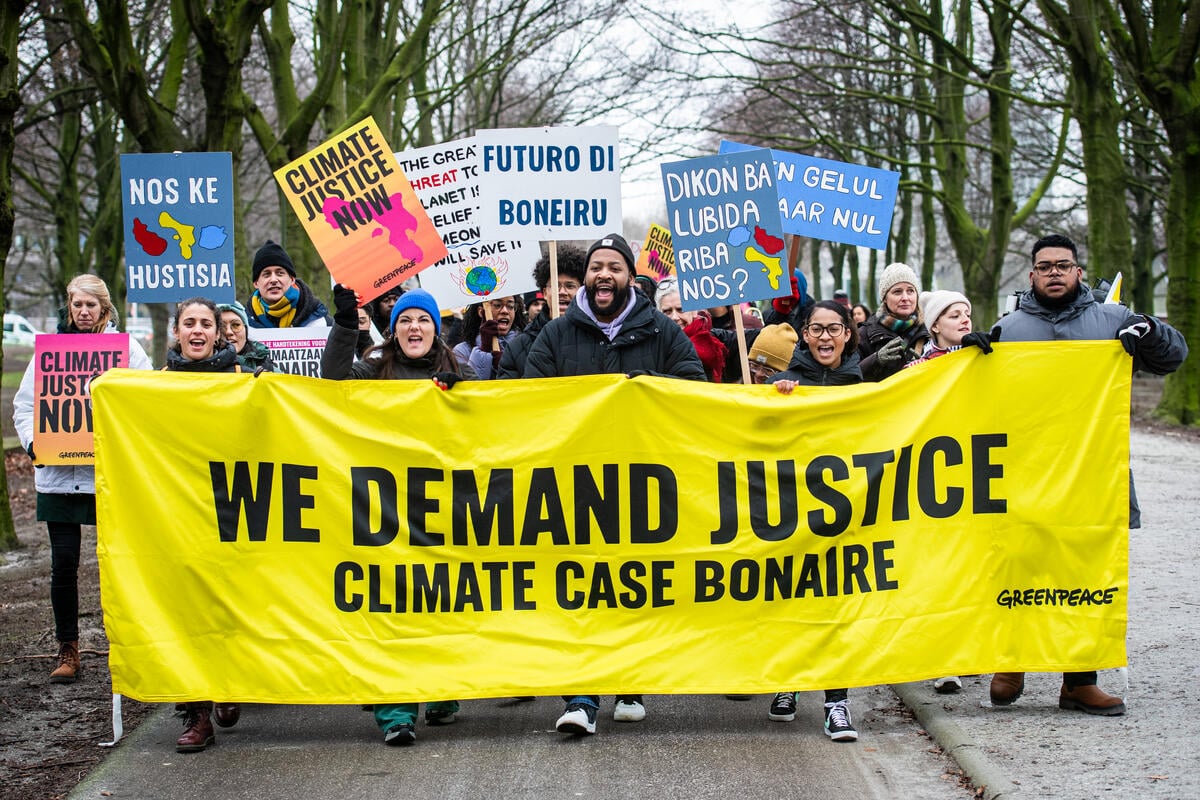
Bonaire Climate case: A fight for justice in Dutch court
Residents of Bonaire are demanding what should already be guaranteed: protection from the impacts of the worsening climate crisis.
Rainbow Warrior Webcam
